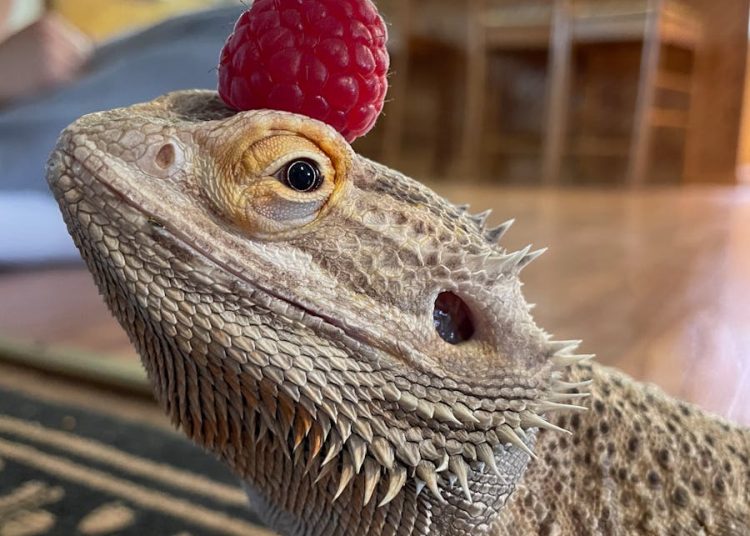Providing your pet with a balanced diet is essential for their health, well-being, and longevity. Just like humans, pets need a variety of nutrients to maintain their energy levels, immune system, and overall health. Understanding the components of a well-balanced diet and how to apply them to your pet’s daily meals can make a significant difference in their quality of life. This guide offers practical tips and tricks for balancing your pet’s diet and ensuring they receive all the nutrients they need.
Understanding the Basics of a Balanced Pet Diet
A balanced diet for pets must include the correct proportions of six essential nutrient categories: proteins, fats, carbohydrates, vitamins, minerals, and water. Each nutrient plays a crucial role in supporting different bodily functions, and deficiencies or excesses can lead to health issues.
Proteins are the building blocks of your pet’s body, providing the amino acids needed for muscle development, tissue repair, and immune function. Fats are essential for energy and are important for absorbing fat-soluble vitamins and maintaining healthy skin and coat. Carbohydrates provide energy and fiber, which aid in digestion. Vitamins and minerals are vital for various physiological processes, including bone health, nerve function, and immune support. Finally, water is essential for hydration and helps facilitate nearly every bodily function.
The specific proportions of these nutrients depend on your pet’s species, age, breed, activity level, and any underlying health conditions. Working closely with your veterinarian is the best way to determine your pet’s unique nutritional needs.
Tips for Balancing Your Pet’s Diet
1. Choose High-Quality Pet Food
The foundation of a balanced diet starts with choosing high-quality pet food that meets AAFCO (Association of American Feed Control Officials) standards. Reputable commercial pet foods are formulated to provide complete nutrition, meaning they contain the right balance of nutrients required for your pet’s health.
When selecting pet food, read the ingredient list carefully. Look for animal-based proteins (such as chicken, beef, or fish) as the primary ingredient, and avoid products with excessive fillers, artificial additives, and by-products. The label should also indicate that the food is “complete and balanced” for your pet’s specific life stage (e.g., puppy, adult, or senior).
2. Consider Your Pet’s Life Stage and Activity Level
Pets have different nutritional needs depending on their age and activity level. For instance, puppies and kittens require more protein, fat, and calories to support rapid growth, while senior pets may benefit from lower-calorie food to avoid weight gain. Highly active or working dogs need more calories to sustain their energy levels, while less active pets may require fewer calories to prevent obesity.
Adjust your pet’s diet according to their life stage and activity level to ensure they receive the appropriate amount of nutrients without overfeeding or underfeeding.
3. Incorporate Variety in the Diet
Incorporating variety in your pet’s diet can help ensure they receive a wide range of nutrients. While high-quality commercial pet food is designed to be nutritionally complete, adding variety in the form of fresh, pet-safe fruits and vegetables can offer additional vitamins, minerals, and antioxidants.
Some safe fruits and vegetables for pets include:
- Dogs: Carrots, blueberries, apples (without seeds), green beans, and pumpkin.
- Cats: Cooked carrots, spinach, and peas (in moderation).
Always introduce new foods gradually and consult your veterinarian before making significant changes to your pet’s diet.
4. Measure Portions and Monitor Caloric Intake
Portion control is essential for maintaining a healthy weight and preventing overfeeding, which can lead to obesity and related health issues. Always follow the feeding guidelines provided on your pet’s food packaging, but adjust based on your pet’s specific needs, activity level, and any recommendations from your veterinarian.
Use a measuring cup to ensure you are providing the correct amount of food at each feeding. Monitoring your pet’s weight regularly can also help you determine if you need to adjust portion sizes. If your pet is gaining or losing weight unexpectedly, consult your veterinarian for guidance.
5. Provide Fresh Water at All Times
Water is often overlooked but is one of the most crucial components of a balanced diet. Ensure your pet has access to clean, fresh water at all times to prevent dehydration. Dehydration can lead to serious health problems, including kidney issues and urinary tract infections.
For pets that eat primarily dry kibble, providing ample water is even more important, as dry food contains significantly less moisture than wet food. Wet or canned food can help increase your pet’s water intake, especially for cats, which are prone to dehydration.
Tricks for Picky Eaters
1. Gradual Transitions
If you need to change your pet’s diet, make the transition gradually to prevent digestive upset. Start by mixing a small portion of the new food with the current food, gradually increasing the amount of new food over a period of 7-10 days. This slow transition can help your pet adjust to the new taste and texture while reducing the risk of gastrointestinal issues.
2. Enhance Flavor with Toppers
If your pet is a picky eater, consider adding a food topper to enhance the flavor of their meals. Food toppers can include low-sodium broth, cooked chicken, or a small amount of wet food mixed with their kibble. Make sure any added ingredients are pet-safe and do not contain harmful additives or excessive salt.
3. Create a Feeding Routine
Establishing a consistent feeding routine can help encourage picky eaters to develop better eating habits. Feed your pet at the same time each day, and avoid leaving food out all the time, as free-feeding can lead to overeating and spoilage. Offer food for a set period (20-30 minutes) and then remove any uneaten portions. This will help your pet understand that mealtime is the opportunity to eat.
4. Avoid Too Many Treats
While treats are a great way to reward your pet, too many treats can contribute to an imbalanced diet and excess calorie intake. Limit treats to no more than 10% of your pet’s daily caloric intake, and opt for healthy, low-calorie options. Treats should never replace a balanced diet, and over-reliance on treats can lead to nutritional deficiencies.
Special Considerations for Homemade Diets
Some pet owners prefer to prepare homemade meals for their pets to have more control over the ingredients. While homemade diets can be beneficial, it is challenging to ensure they are nutritionally complete. Many pets on homemade diets may suffer from nutrient deficiencies if their meals are not properly balanced.
If you choose to prepare homemade meals for your pet, it is crucial to work with a veterinarian or a pet nutritionist to formulate a diet that meets all of your pet’s nutritional needs. Supplements may be necessary to provide essential nutrients like calcium, phosphorus, taurine (for cats), and essential fatty acids.
Recognizing Signs of Nutritional Imbalance
To keep your pet healthy, it is important to recognize the signs of a nutritional imbalance, which may indicate that your pet’s diet needs adjustment. Common signs include:
- Weight Gain or Loss: Unexpected weight changes can indicate overfeeding or underfeeding. Monitor your pet’s weight regularly and adjust their diet accordingly.
- Dull Coat or Dry Skin: A lack of essential fatty acids can result in a dull coat, dry skin, or excessive shedding.
- Digestive Issues: Vomiting, diarrhea, or constipation can indicate a dietary imbalance, sensitivity, or food intolerance.
- Low Energy Levels: If your pet is unusually lethargic or lacks energy, it may be a sign of an inadequate diet.
- Frequent Illness: Poor immune function due to a lack of vitamins and minerals can lead to frequent infections or a weakened immune system.
If you notice any of these signs, consult your veterinarian to determine if dietary adjustments are needed.
Balancing Treats and Supplements
1. Treats in Moderation
Treats are an enjoyable part of your pet’s life, but they should be given in moderation to maintain a balanced diet. Opt for treats made from high-quality ingredients, and avoid those containing excessive sugar, salt, or artificial additives. Treats can be used for training and rewarding good behavior, but they should never constitute a major part of your pet’s daily caloric intake.
2. Supplements to Address Specific Needs
Supplements can be beneficial for pets with specific health conditions or nutritional needs that are not being met by their regular diet. Common supplements include:
- Omega-3 Fatty Acids: To support skin, coat, and joint health.
- Probiotics: To promote a healthy gut microbiome and improve digestion.
- Glucosamine and Chondroitin: To support joint health, particularly in older pets.
Before adding supplements to your pet’s diet, consult your veterinarian to ensure they are necessary and safe for your pet’s specific needs.
Final Thoughts on Balancing Your Pet’s Diet
Balancing your pet’s diet is an essential aspect of responsible pet ownership. By providing the right combination of nutrients, adjusting portion sizes based on your pet’s needs, and working closely with your veterinarian, you can help ensure your pet lives a long, happy, and healthy life. Remember, each pet is unique, and their nutritional needs may change over time. Regular veterinary check-ups and monitoring your pet’s health and weight are key to providing the best possible care for your furry friend.








